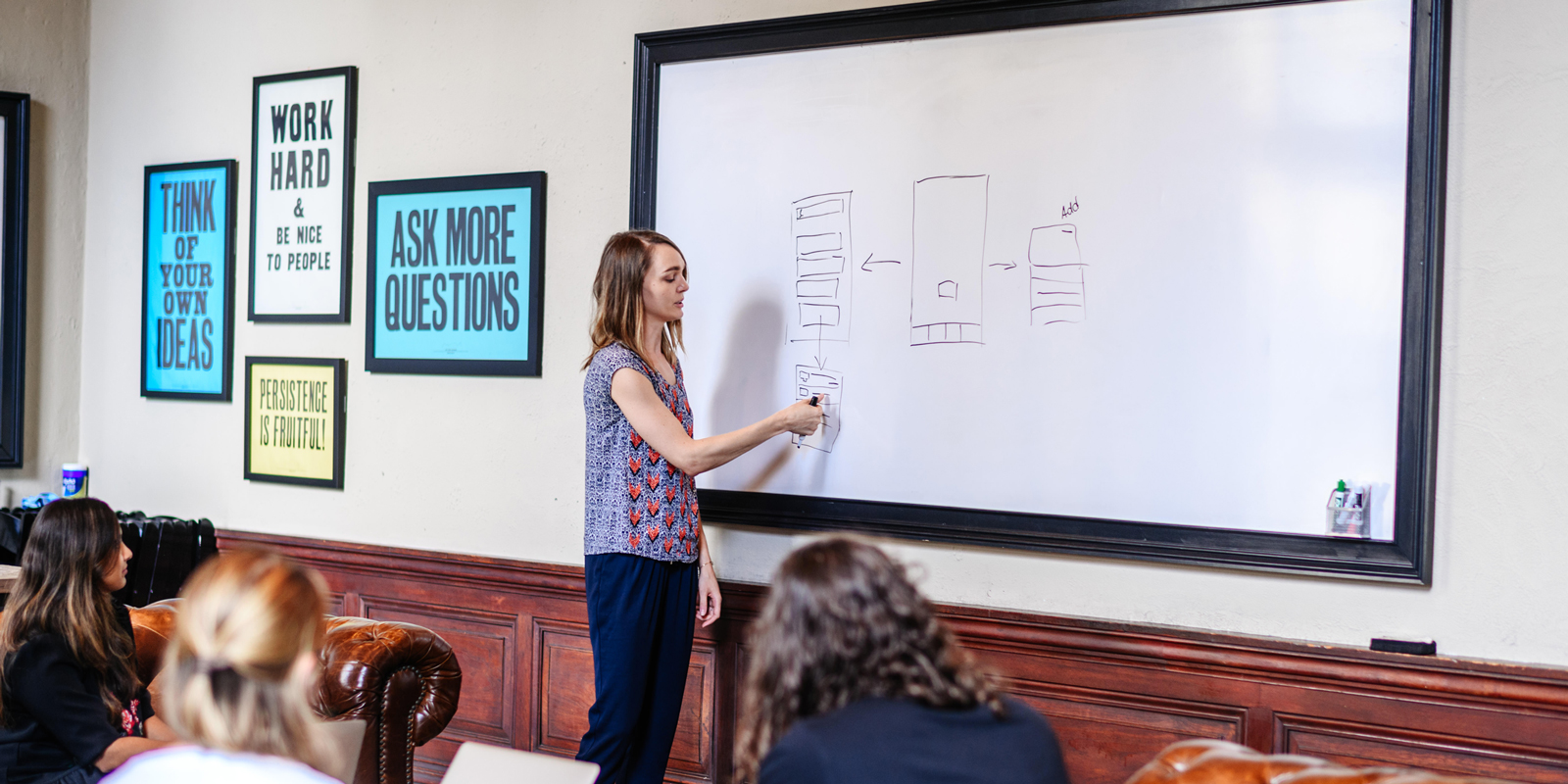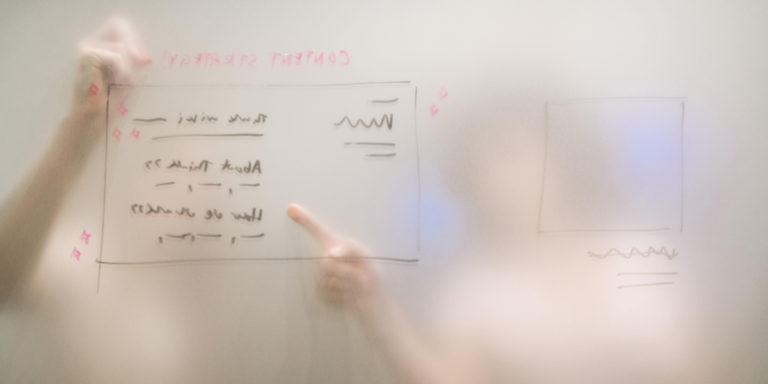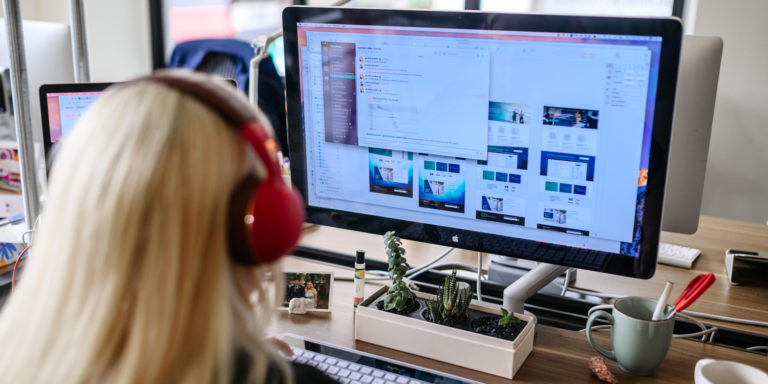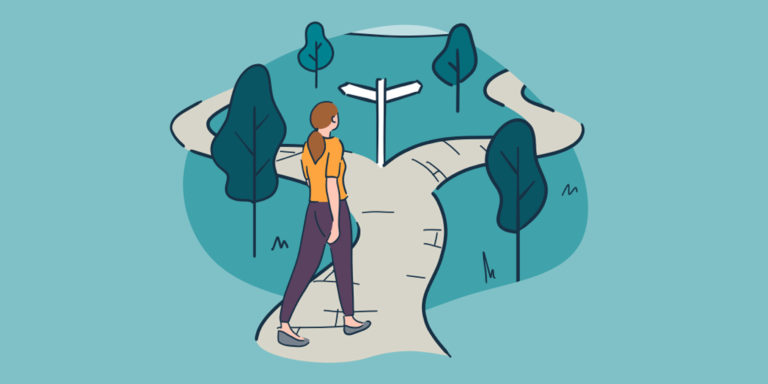How to build a design culture and foster creativity in an organization

Often, creativity is thought of as a boundless, abstract concept associated with art and the humanities. It’s more of a feeling; a muse that inspires poets and fine artists, or a spirit that befalls free thinkers. It’s no wonder, then, that many struggle to associate creativity with company goals. What’s inspiring about a company’s key performance indicators? How can product requirements spark our imagination?
As experience designers, we’re not only bound by the business objectives of our clients, but also by what people need or want from the thing we’re designing. So how do we foster an agency wide design culture in a structured and data-driven environment?
What is design culture?
Design culture means that design is at the forefront of everything your organization does, from strategy to execution—it’s a work environment grounded in design thinking principles. Design culture goes beyond understanding your customers’ wants and needs (although important!) and dives deeper into why the customer wants something. Design-driven companies focus on creating experiences that add value to users’ lives beyond meeting basic needs, while championing the importance of design—internally and externally.
Benefits of creativity in a company
Because a design-driven company’s foundation is built on problem-solving, there is a constant focus on improvement. Creativity can lend to collaborative efforts that bleed from the inside out, whether in process or tooling. The benefits of creativity in a company are seemingly endless. Whether it’s a creative collaboration that leads to impactful and innovative solutions or user research and interviews that surface empathy in decision-making, creativity can open the door for new ideas that set you apart from the competition.
How to foster creativity in the workplace
So you get why it’s important, but how can organizations foster creativity in the workplace? It’s important to note that individuals respond differently to out-of-the-box thinking. A strategy might be right for one person but not for another. It’s important to try multiple approaches to fostering creativity in an organization (or even on an individual project team).
Importantly, understand that creativity is simply potential with constraints. Even artists are bound by the materials they use or the size of their canvas. With that in mind, here are some ways to foster creativity no matter what type of environment you’re working in or what your role on the team may look like.
Build design culture through listening
If you’re a design leader in your company, you’re likely accustomed to working within constraints like time, budget, scope, requirements, etc. to generate multiple possible solutions, but it’s important to keep in mind that before you put the proverbial pen to paper, there is still a lot to learn about what you are designing.
Strong design leaders are good listeners. To listen well, we rely on research to discover what we don’t know and understand the needs and wants of the people and business processes we’re designing for. This type of listening can take the form of competitive analysis, in-depth interviews, contextual inquiries, workshops, or requirements gathering, but no matter what research method you use, the goal is to gain a strong understanding of the problem in front of you.
Often, getting a better understanding of your challenge is what generates excitement about solving it. Research releases some constraints you might have thought you had, and lays down others you didn’t realize were important. Most importantly, this is the stage where you can unleash creativity and begin to form ideas which can, in turn, enhance organizational creativity.
Foster creativity with idea generation
To pursue as many viable solutions as possible, we work to generate lots of ideas through conversations with users and company stakeholders, whiteboard drawings, and notepad sketches.
Often, this is the freest moment to explore what might happen inside and outside of constraints. When this happens early on in the design process, you can rule out less successful ideas before they turn into costly rework down the road.
Once you generate multiple ideas, take them back to users and company stakeholders in the form of research and reviews, respectively. This way, you’ve given yourself the freedom to explore, all while keeping your various constraints in mind.
Collaborate across creative work
Sharing work in progress can seem daunting, especially considering the stereotype that artists are fragile about feedback, but here is where our definition of creativity at Think Company is formed.
When it comes to design, transparency is key. Our work is never truly finished. Design is continuous and iterative, and requires consistent input from the people and processes that it serves. Showing work in progress is how we gain that input to fine-tune our solutions. Users and business stakeholders are typically quick to let designers know if designs miss the mark, or if ideas aren’t quite what they need or expect. And while hearing that kind of feedback may feel like failure, it’s an opportunity to improve creative designs and find the right solutions faster.
Sharing in-progress work also invites stakeholders and other team members to be creative with you. Folks might be hesitant to offer suggestions or ideas if creative designs feel “too polished” or “buttoned up.” Eliminate this inhibition, and be open to working with others early and often to bring great ideas to fruition.
Feedback in a design culture
Gathering and processing feedback on designs through research and reviews helps to uncover untapped creative ideas, and unleashes the freedom to think differently. New concepts and constraints lead to new ideas and possible solutions. Without research and requirements, creativity could generate solutions that aren’t useful.
The benefit of creativity is being able to take the pieces of everything you’ve gathered (feedback, requirements, research, and constraints) and making something useful, usable, and delightful from it.
It’s in this process that we know we’ve done something truly creative. The benefits of creativity in a company must not only be defined by what our imaginations can produce without limits, but also what our imaginations can produce with limits.
Establishing trust in design culture
If you’ve implemented any of the above suggestions to spark creativity and build your design culture, then you are well on your way to building trust! By taking time to understand the problem, generating ideas, sharing your work from sketches to prototypes, and checking in with your users and stakeholders, creativity flourishes. You create a design culture where clients who never consider themselves “creative” become just that.
At Think Company, we call this the “marker” moment, and it typically reveals itself when clients “pick up a marker” and begin drawing out ideas themselves—or when stakeholders can defend design decisions with confidence and a sense of ownership, knowing they’re serving business and user needs.
Build diverse, supportive teams
Science has proved that human beings are more creative when we work in diverse teams. Being around people who are different from us promotes the introduction of different perspectives, which in turn helps generate lots of ideas that can lead to more holistic and well-informed solutions. (Remember: generating lots of ideas helps spark creativity!) When working with clients, we don’t always get to choose how teams are built, but any differences among individuals in a team in terms of race, gender, philosophy, team role, etc. should be celebrated as a creative strength, understanding that those differences can take you beyond your own perspectives and assumptions to find bigger and better solutions.
With that diversity comes a responsibility to be supportive. When team members feel listened to and understood by other members, team leads, and client stakeholders, they’re more excited about the work and focused on solving the design challenges at hand.
Fostering creativity is a discipline
Creativity is not just a feeling, it’s a discipline. It’s the ability to focus and build something marvelous where it felt like there was a mess before. You can do this by generating many ideas, bringing users and stakeholders into your process to understand and think critically about ideas, and fostering a diverse and supportive community where those ideas can flourish and morph into the best approach.
For companies, that mess might be the refactoring of a legacy platform suffering from feature-bloat, the tangled web of taxonomy and content structure, or wild inconsistencies in a design system. As design leaders, we can use the power of design culture and creativity to unravel those sorts of problems to have a real impact on tools and services, and those who use them.
As a company rooted in design thinking, we see the value that fostering creativity in the workplace brings to us daily. Whether internally, when collaboration leads to improving a process, or externally when a client project shifts gears and leads to a delightfully user-focused product—we reap the rewards. Enhancing organizational creativity should be high on your to-do list, and we’re here to help.
Thanks so much to fellow Thinkers Brittany, Adam, Rachel, and Neha for their contributions to this post.



